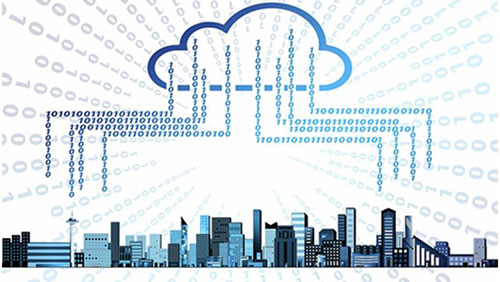Using The Tools Available
Businesses today don’t require an office in a specific location. They don’t require costly end-user devices. They don’t require an on-site server array. You don’t even need anyone in payroll, if you get the right cloud apps. Cloud computing, in fact, is key to all these infrastructural cost reductions.
Today, the web has become largely decentralized owing to cloud computing and the Internet of Things, or IoT. Cloud computing networks multiple servers together such that their combined power is exponentially greater than a single device would be. For example, if one server processed a terabyte in ten minutes, two might do it in five, four in two and a half, eight in one and a quarter, and so on.
Amazon has a cloud made of more than a million servers. Now certainly, their speed doesn’t quite match the illustration here, as they are serving multiple clients simultaneously. Still, what is achievable within internal operational infrastructure is comparable to cloud solutions. Additionally, private options can give businesses large or small greater power at less cost.

A Closer Look At Internal Expenses
The expense of transport, space, backup, troubleshooting, upgrade, and personnel associated with an on-site server array is much greater than that which comes from an outsourced cloud option surrogating the same function at a monthly fee. Additionally, such an on-site array is routed to a given location and requires access primarily through intranet channels.
Businesses are unable to access their network remotely. Meanwhile, a cloud solution gives anyone with access to the web from a secure connection, and proper authentication protocols, the ability to work remotely. This has facilitated BYOD, or Bring Your Own Device, protocols.
Essentially, instead of buying end-user devices for each employee, you can simply allow them to use their own devices to complete work. There are dangers involved in such a method, though. For one, BYOD usually doesn’t have devices which are consolidated in terms of operating systems and software.
For another, some may have malware which could infect your network. If you’re going the BYOD route, it’s essential to incorporate MDM or Mobile Device Management. MDM can remotely upgrade or erase devices under its penumbra. But even more compelling is DaaS or Device as a Service.
The DaaS Factor
As cloud computing can be rented on a monthly basis, DaaS can additionally provide devices in a similar fashion. If you’ve got twenty employees, you can rent twenty laptops a month as end-user portals which input data into your network. Those end-user portals can then be switched out if they malfunction without data loss.
When you’re conducting operations over the cloud, you’ve got no reason to store information on local hard-drives. Also, it’s possible to acquire software and associated management tools facilitated through the cloud which have cross-platform applicability.
Whether or not you rent end-user devices using DaaS, going the cross-platform route can facilitate consolidated team-wide access solutions that are flexible, and which can be monitored. You can visualize your logs and identify trends, allowing for more streamlined operations. Customer problems can be identified, app requests debugged, database queries managed, and much more.

Edge Computing And Cloud Apps
Something else that’s considerable in regard to the non-stationary office is edge computing, which uses IoT devices similarly to servers in a cloud array as a means of launching a private intranet for a business.
If your operation were, for example, a factory with a hundred workers and a thousand IoT devices, the data processing load could be evenly distributed across all of them, essentially allowing you to “float” your own independent network.
Changes like these have swiftly begun to eradicate centralized computing solutions, as they provide greater ability at a diminished expense, ultimately yielding ROI. Profit may additionally be expected from such infrastructural solutions, provided they’re properly managed. Don’t worry about the loss of ability; design businesses find all kinds of apps for their specific needs across the cloud, and they’re not alone.
Something For Everyone
Most businesses can find some analog to on-site software through the cloud, and they’re likely to find the cloud option more reliable. Speaking of reliability, you can expect such solutions to feature expanded security, owing to the fact that clouds are competing with one another, and managing them requires top-tier professionalism.
Unless you can afford to run your own internal tech company, your business likely can’t match the security or contemporaneousness of a cloud option. Additionally, to remain competitive, cloud providers must always remain on the cutting edge. If they don’t, their competition snatches up their clients, and their profit margin sinks.
Add to that Moore’s Law, which predicates an exponential doubling of computational ability at eighteen-month intervals, and you can see why those providing outsourced and decentralized cloud options are able to provide better solutions than internal management.
In brief, even a small business can contend with “big fish” owing to such technology breakthroughs. Those businesses who haven’t begun moving toward decentralizing their own operations are likely leaving resources on the table.
About the author:
AJ Phillips
AJ is the IT consultant with dailycupoftech.com who helps digital businesses reach their full online potential. AJ is passionate about programming and IT consulting. His current focus is helping SaaS businesses create a better world for our kids. He frequently writes about the latest advancements in the digital and tech industry.